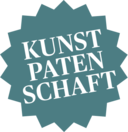Casula des Meßornats des Ordens vom Goldenen Vlies
um 1430/40
Casula des Meßornats des Ordens vom Goldenen Vlies
The chasuble was among the last of the vestments to be created (in about the 1430s). Derived from the secular overgarments worn in everyday life in ancient times, the sleeveless, poncho-like cloak and was used for liturgical purposes since the early Middle Ages. Since the 12th century the chasuble has been worn by the clergy celebrating mass; the front and back of the garment are usually ornamented with appliquéd orphreys in the form of a cross (chasuble cross). The chasuble of these liturgical vestments displays what appear to be three different layers, superimposed on top of each other and overlapping, but in fact this is all a single layer of precisely planned embroidery work. The basis is formed by a geometrical honeycomb structure with chapel-like compartments enclosing figures of angels, a device also found in the other garments of these vestments. The so-called chasuble cross appears to be superimposed on top of this, creating the impression of woven brocade. On top of these two planes is a third layer, consisting of appliquéd figures: on the front of the chasuble the Baptism of Christ is depicted, while the back shows the Transfiguration of Christ. The process of interconnecting these three planes, with their different illusory effects, is a remarkable achievement on the part of the embroiderers: they understood how to resolve the conflict between the chasuble's function as a liturgical garment and its role as a vehicle for a pictorial scheme. The masterful exploitation of all the possibilities afforded by the art of embroidery is particularly evident in the execution of the Transfiguration of Christ. In contrast to the needle painting used in the other vestments for depicting flesh tones, or nué embroidery is employed here for Christ's face, illuminating it in red and gold hues and perfectly expressing in visual terms the appearance of light described in the Bible ("[...] and his face did shine as the sun").
Object data
Object Name
Parament; Textil; Liturgisches Gewand
Culture
Burgundisch - niederländisch (Brüssel ?)
Dated
um 1430/40
Material
Starker Leinengrund; an den Gewändern das Rahmenwerk aus rotem Samt und Goldborten; Gold-, Perlen-, Samt- und Seidenstickerei (Nadelmalerei, Lasurtechnik) (Textil)
Dimensions
L. 149,5 cm, B. 135,5 cm
Inscribed
HIC EST FILIVS MEVS DILECTVS IN QVO MI(HI) B(E)N(E) CO(MPLACAVI) (VS); HIC EST FILIVS MEVS DILECTVS IN QVO MIHI BENE CO(M)PLAC(VI); NEMINI DIXERITIS VISIONE(M) DONEC FILIVS HOMINIS A; D(OMI)NE BONV(M) EST NOS HIC ESSE SI VIS FACIAM(VS) HIC (RS)
Image rights
Kunsthistorisches Museum Wien, Kunstkammer
Inv. No.
Kunstkammer, 14
IGS - Casula des Messornats des Ordens vom Goldenen Vlies
OESG - Casula des Messornats des Ordens vom Goldenen Vlies
Permalink (citable Link) to this page: www.khm.at/en/object/86213/
Kunst & Patenschaft
This object is still without a Art Patron. Accept the patronage and make sure that this cultural treasure is preserved for future generations.
Your donation is a direct and sustainable contribution to the scientific documentation, research, restoration, and presentation of the artworks of the Kunsthistorisches Museum Wien.

